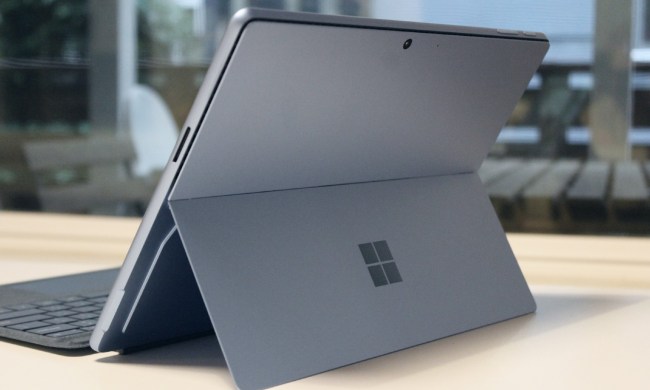Microsoft is on a risk-taking spree. From opting for diverse processor choices to switching operating systems, the Surface team over at Microsoft hasn’t been shy about taking chances in its set of devices.
But not all these choices are destined to pan out. The Surface Pro X looks amazing from a hardware perspective, but Microsoft’s choice to go with a Qualcomm ARM processor may have severely stunted what might have been the company’s biggest success.
The processor limits the Surface Pro X experience

The Surface Pro X isn’t powered by an Intel processor like other Surface devices or Windows laptops. Instead, it features a custom Microsoft SQ1 SoC based on the Qualcomm Snapdragon 8cx.
Microsoft laid down a big claim that this chip would be three times as fast as the Intel processors in the Surface Pro X. As many of the early reviews have shown, that doesn’t look to be true.
Currently, if you head out and buy the Surface Pro X, the SQ1 processor will limit what you can do with your new device. Sure, you’ll be enjoying web browsing, super-slim bezels, and a wonderful design, but the overall experience might not be as you expect. It’s all thanks to the ARM-based SQ1 processor in the device.
By using an ARM processor in this device, Microsoft is having to heavily depend on its developers.
Microsoft and Windows 10 shares a deep heritage with using Intel processors. Unfortunately, Windows 10 just isn’t yet optimized for ARM devices. While you still get the full-on professional version of Windows 10, Microsoft has a list of limitations you might face with ARM-based devices like the Surface Pro X. It gives you this explicit warning: “Peripherals and devices only work if the drivers they depend on are built into Windows 10, or if the hardware developer has released ARM64 drivers for the device.”
Buy a new fancy 3D printer? It might not work on your new Surface Pro X. Really want to install that CAD, engineering, or graphic design program? It probably won’t work on your Surface Pro X. Want to play Steam games? It likely won’t work on your Surface Pro X.
Currently, 64-bit Win32 apps (x64) won’t work on Windows 10 on ARM unless developers recompile their apps for the ARM architecture (ARM64). You can still enjoy and run 32-bit versions of programs like Google Chrome, or Photoshop, but due to emulation, the performance won’t be great. By opting for an ARM processor in this device, Microsoft is having to heavily depend on its developers. That is something it wouldn’t need to do if it had released an Intel-based Surface Pro X.

If Microsoft wants to succeed with the Surface Pro X, it needs an Intel version
At the end of the day, the combination of performance limitations and app restrictions is a serious letdown for such a premium device. These things could change in the future, but as of now, opting for an ARM-based SQ1 processor is crippling its potential.
And it’s not to say that Intel didn’t have the tech ready for a thin and light 2-in-1 like the Surface Pro X. Its upcoming Lakefield CPUs would have been a great match for the device, delivering computing performance and next-generation graphics ad extended battery life. That would be thanks to a hybrid architecture that combines power-efficient “Tremont” cores with a performance scalable “Sunny Cove” core. The idea of a Surface Pro X with an Intel Lakefield chip isn’t an impossibility. Samsung has already done a similar thing with its upcoming Galaxy Book S, which is offered in both Qualcomm and Intel models.
With a dual-screen Surface Duo on the way, I could see why Microsoft opted for ARM and its own custom chipset. The company could be taking a big bet and is looking to diversify its portfolio of devices. Much like Apple, Microsoft wants tighter control on its own devices, so it doesn’t have to depend on Intel’s own release schedule. But if it wants the Surface Pro X to continue on, an Intel option is the best way to save it.


